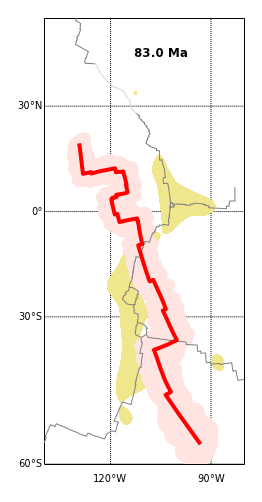AGU 2013 Presentation: more than slab pull driving the East Pacific Rise?
Categories Plate Tectonics, Presentations
My visit to San Francisco for the American Geophysical Union Fall Meeting was somewhat truncated this year, but I had a stimulating couple of days catching up and talking shop with many friend and colleagues from around the world. I also gave a presentation of new work that follows on from my post-doctoral research under the guidance of David Rowley at the University of Chicago, looking at the evolution of the East Pacific Rise, the world’s fastest spreading oceanic ridge system. Certain aspects of the behaviour of the EPR over the last few tens of millions of years are hard to explain in terms of pull from distant subducting lithospheric slabs, which is generally regarded as the dominant control on the motion of the Earth’s tectonic plates. A copy of the presentation – in PDF form, so missing a few of the animated bells and whistles of the actual presentation – is embedded below.
One key bit of evidence that forces acting at the ridge axis itself – possibly linked to a strong upwelling from the core-mantle boundary beneath the present ridge axis – are an important contributor to the evolution of the EPR is how little the position of the ridge axis has changed in a mantle reference frame in the past 83 Ma. This is illustrated in the animation below, a victim of the conversion process in the uploaded presentation. We argue that the EPR being fixed above a particular region of the mantle, which is also a region of strong upward convective flow, is unlikely to be a coincidence.

Please note: this is preliminary work that is still making its way through the peer review system, and will no doubt get altered and refined as it does so.